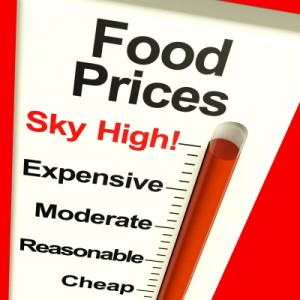There are very few groceries or household staples for which we pay full retail. It does not matter whether it is canned vegetables, packaged sliced cheese, fresh meat, soda pop or dish detergent. We almost always buy at a discount. And we almost never run out of something so that we are forced to buy “now” at whatever price. Which is why we are able to benefit from so many discounts. Here’s how we make that happen.
We buy extra when the price is marked down. And we buy even when we have a supply of the item. For example, we really do not like generic-brand cola and so we drink Coke or Pepsi. Periodically, our grocery store has a 2-for-1 sale on Pepsi products or a $1-per-2-liter-bottle on Coca-Cola soft drinks. When that happens, we will buy a lot of those bottles (sometimes, all that’s on the shelf). And we’ll do that even if we already have several Coke or Pepsi bottles at home.
We are flexible about what brands we buy. That allows us to play Coke against Pepsi and always buy whichever brand is discounted. (And, having a reserve supply from previous discounted buys allows us to not buy when both brands are priced at full retail.) The same goes for bread (which we freeze). The same goes for cat food. And so on.
We also stay flexible about what items we buy. If sirloin steak is on sale but chuck steak is not, we buy the sirloin. (In quantity, to be portioned and frozen). Or vice versa. If broccoli is on sale but cauliflower is not, we buy the broccoli. And, if neither is discounted, we will go for cabbage or carrots, which are always priced much lower. We always look for options because we know from past experience that we can find one.
We make sure to factor in the week’s loss leaders. We go to the grocery store armed with a list of what we need to buy. And that list incorporates any of the marked down items included in the grocery store’s weekly sales flyer that we would normally use. But we don’t run around from store to store doing that because, in our case, the 25-mile-plus distance to other grocery stores would make that a losing proposition.
We have made room to store the extra supplies. We have set up a chest-style freezer in the kitchen and plastic storage shelf units in the basement. This facilitates organized and long term storage of any and all groceries and household staples. So we can time all of our household buys for cost effectiveness.
If we did not have the room we do now for that storage, we would make room. The refrigerator’s freezer compartment would be reserved for meats. There would be wall shelving for cans and boxes. We would find a way to be able to stock up at good prices. We would not allow ourselves to be at the mercy of standard retail prices. Because there is no need to let than happen.
The takeaway: With just a little planning — and a little common sense about the real value of name brands — anyone can score major savings on the cost of groceries and household goods. And those savings do add up to either a better life now or a faster track to financial independence. Or both!
# # #








Recent Comments